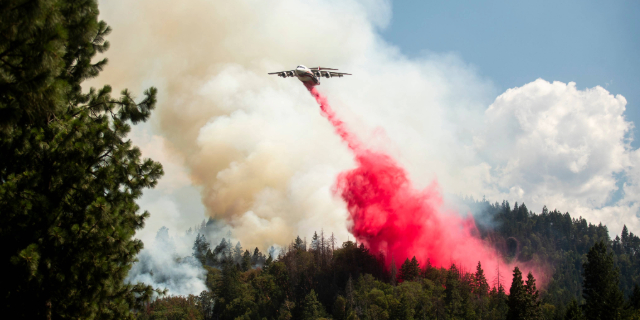OTHER VIEWS: State should pony up to increase fire protection
Published 6:00 am Sunday, April 23, 2023

- Columbia Gorge fire
It’s hardly surprising that the Oregon Department of Forestry has in recent years spent considerably more money to fighting wildfires than in previous decades.
Trending
With catastrophic fires such as those that burned hundreds of thousands of acres, and hundreds of homes, during the 2020 Labor Day weekend, the firefighting tab inevitably has risen.
From 2013-2022, the state agency’s annual average firefighting cost was $89.6 million.
That’s a nearly eightfold increase over the $11.6 million annual average from 2003-12.
Trending
The Forestry Department is responsible for fighting fires primarily on private property, including tens of thousands of acres in Baker County and elsewhere in Northeastern Oregon.
The Oregon Legislature responded to this expensive and dangerous trend by passing Senate Bill 762 in 2021. The legislation required the Forestry Department to augment its firefighting capabilities by hiring 85 employees, including 35 seasonal firefighters, and buying equipment.
Rather than pass on the entire cost to the private property owners who pay an annual fire protection assessment, through their property taxes, the legislature included $15 million to help cover the cost of the new employees and machinery.
Protection rates did rise for the current fiscal year, which ends June 30 — by 8.7% for timber land and by 12% for grazing land.
The Forestry Department has requested another $15 million for the next biennium, but Gov. Tina Kotek’s proposed budget doesn’t include the money.
Without those dollars, the agency projects that protection rates would rise in Northeastern Oregon by 58% for grazing land, and by 34% for timber properties.
State Rep. Mark Owens, R-Crane, whose district includes Baker County, called those increases “unacceptable.”
Owens is correct.
He’s advocating for the legislature to include the $15 million. So is his legislative colleague, Sen. Lynn Findley, R-Vale, who also represents Baker County in Salem.
Mark Bennett, a retired Baker County commissioner and chairman of the state’s Wildfire Programs Advisory Council, also plans to testify in favor of the $15 million before the Joint Ways and Means Committee later this month.
It’s reasonable that property owners who benefit from the Forestry Department’s fire protection should pay more for a service that has become so much more expensive over the past decade.
But rate hikes of 58% and 34% are not reasonable.
And with the state’s income tax revenues so far above economists’ projects that taxpayers are slated to receive tax “kicker” refunds exceeding $3 billion next year, the legislature can certainly afford to include the $15 million in the next budget.









